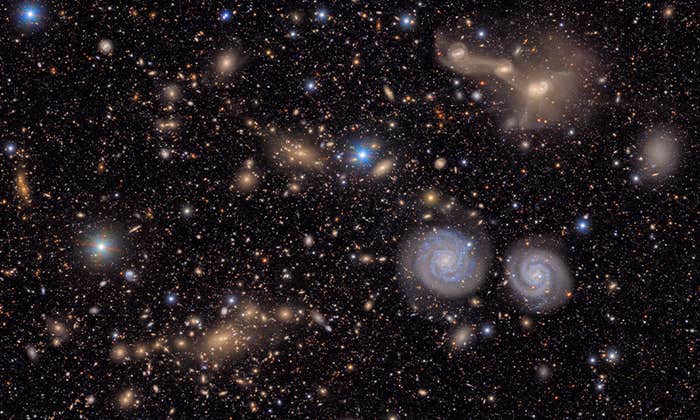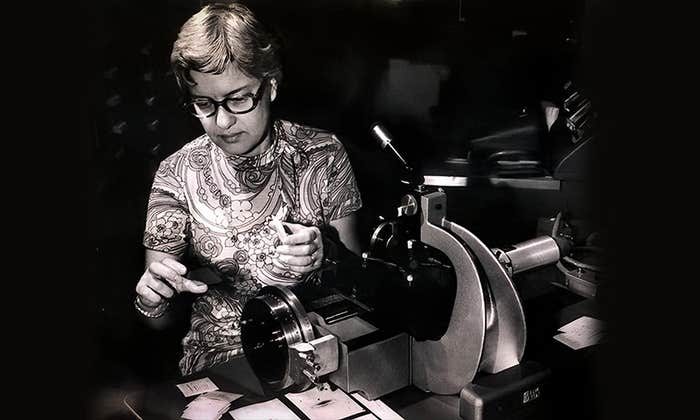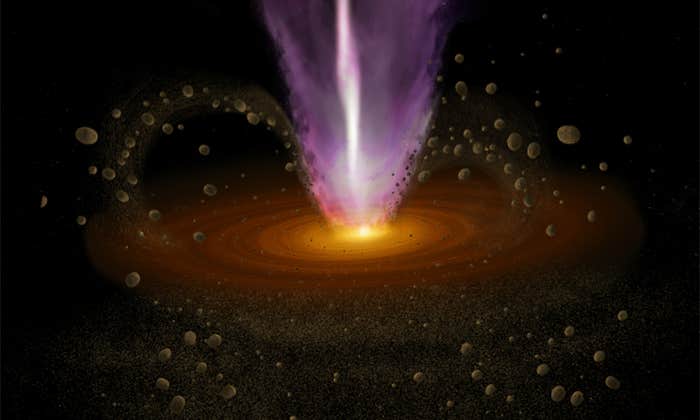In the early 1960s, during the space race, neither American nor Soviet scientists really knew where planets like Mars or Venus were—especially at the accuracy and precision essential for spacecraft navigation. That may sound faintly ludicrous. They of course knew roughly where a target like Venus would be when a spacecraft got there. But “roughly” in this context might be an offset of 10,000 or 100,000 kilometers. Planetary positions, their ephemerides, rely on the calibration of their orbits to extremely high precision over time. But the only way to do that properly is to make direct measurements, just as the mariners of old would need to sail right by an island or shoreline in order to nail down its latitude and longitude.
An infamous example of the problem came in early 1961. Plans were afoot to send a probe to Venus, starting with the Soviet launch of the Venera 1 probe. Soviet and American scientists were racing to pin down Venus’ position and use it to also refine the astronomical unit—then defined as the average distance between the center of the Earth and the center of the sun. (Bouncing radar signals off of Venus was a way to do this from Earth.) A few months along and the Soviets proudly announced their improved Venus-based measure of the astronomical unit. But the Americans quickly saw that this was about 100,000 kilometers different than their own radar-based measurement and gleefully taunted the Soviets by suggesting that they had instead perhaps detected a new planet.1
It’s comforting to suppose that what we call reality is fixed. It seldom is.
In what was, in retrospect, some perverse luck (for scientists wanting to avoid being prematurely retired), the Soviet probe—scheduled to fly by Venus around the time of the distance-measurement announcements—had already suffered a series of indignities that included failed thermal control and failed attitude control. And while it likely did pass somewhere near Venus, we’ll never know exactly how badly off the mark it was, because at that point all communications with the probe had ceased.
But misplacing Venus could have been truly disastrous. Venera 1 might have missed by so much that it wouldn’t have acquired any useful data anyway, or it might have careened into the planet for an inglorious destruction. Not surprisingly, with such traumatic lessons, scientists have sweated over getting the ephemerides of solar-system objects pinned down better and better. Yet even with immense improvements, the fundamental issue of precisely locating both spacecraft and their planetary targets hasn’t gone away. In a sense, it’s become even more acute.
Today, one of the keepers of the ephemerides is the Jet Propulsion Laboratory, in California. It provides carefully curated and continually updated data on where we think planets, moons, comets, meteor streams, and asteroids are. A kind of Farmer’s Almanac for planetary exploration. But the farther we go, and the more exotic our targets are, the greater the challenge.
Ambitious plans are being drafted for sending tiny “nanocraft” with light sails, propelled by an immensely powerful laser, all the way to the Alpha Centauri star system.2 It is over four light-years away and involves a journey of at least 20 years, traveling at 20 percent of the speed of light, or around 134 million miles per hour. The problem of getting to the right place at the right time in another star system is vastly greater than reaching even one of our own remote outer worlds, like Pluto. And getting to Pluto was hard enough.
Launched at a record-breaking speed in 2006, NASA’s New Horizons probe raced out to Pluto (with a gravity assist from Jupiter) for more than nine years and nearly 5 billion kilometers.3 Using telescopic measurements from here on Earth, and sophisticated computer modeling of Pluto’s orbital motion, we can pin down its location in our skies to a precision of some 0.00014 degrees of angle. Pluto is so far away, though, that this modest uncertainty translates into a position error of about 13,000 kilometers, enough to severely hamper an effort at a close flyby. To complicate things further, the spacecraft experienced hard-to-predict drifts in its trajectory due to sublimely ethereal forces from the uneven thermal radiation coming from its plutonium-filled electrical generator.
New Horizons finally made the encounter in July of 2015, to the immense relief of scientists who had literally waited a substantial fraction of their lives between launch and arrival. It zipped past Pluto at around 12,500 kilometers of carefully chosen separation. In the end, getting New Horizons to zip past Pluto and its attendant moons anywhere close to the right path took meticulous positional measurements and course corrections using the probe’s own cameras, and a lot of patience.
You can end up with a future where the solar system destabilizes, flinging planets into the sun.
Now compare Pluto to the closest of the Centauri stars, a diminutive red dwarf called Proxima. It is moving relative to our sun with a total velocity that we know to be about 32.19 kilometers a second. But that least significant figure of 0.01 kilometers a second translates into a raw uncertainty in position accumulated during a 20-year mission of a little over 6 million kilometers. And that’s the star—a bright, comparatively easily studied object. Planets in the system will be a billion times dimmer and much harder to pin down. As with New Horizons, interstellar probes are likely going to have to track their own targets. They’ll have to do it autonomously because communications with Earth will take years to bounce back and forth.
It remains to be seen whether tiny spacecraft can carry the requisite computational toolkit or sensory and steering capacity to do this. The bright stars themselves might be the best markers to exploit, together with our own sun forming a navigational beacon. Tiny pulses from miniature laser diodes could provide thrust to maneuver with, and perhaps the key is to send hundreds, even thousands, of nanocraft, each with modest AI and an ability to learn from each other and to reach their goals in space and time through massive redundancy and the sacrifice of many. But when you’re trying to catch a flying bullet—whether star or planet—with another flying bullet, things can go wrong.
It’s not hard to recognize that uncertainties in position that span thousands or millions of kilometers might be problematic for explorers. Trying to extend our reach beyond the familiar can, clearly, place some unforgiving demands on our ability to chart physical reality. But these examples also lead to a much deeper truth about our conception of the world, and how we codify and interact with it.
The curious thing is that there are fundamental qualities of the physics of orbiting stars and planets that hinge on much, much smaller positional uncertainties and can quite literally dictate the survival of an entire system. The roots of this lie in the phenomenon of dynamical chaos among gravitating objects, the confounding but mathematically chartable instability and unpredictability of celestial motions. And while chaos had been recognized since the 1880s, it wasn’t until the 1980s that researchers developed purpose-built computers to accurately simulate the gravitationally driven motion of planets in our solar system. Simulations that revealed just how chaotic a space we live in.
It turns out that, if you track the motion of the contents of our solar system through tens of millions to billions of years of time, variations in the positions of a planet like Mercury at the level of millimeters can make all the difference. You can end up with a future of relative orbital blandness or a future where the inner solar system destabilizes, flinging planets into the sun or onto escape trajectories to interstellar space, or even placing worlds on collision course with each other.4
That such tiny variations can cause such radically different outcomes doesn’t sit well with most humans hoping for some predictability in the world. This speaks to something that we appear to struggle with as a species. It’s comforting to suppose that what we call reality is fixed, or at least predictably in flux. It seldom is.
In sending machines to other worlds, even to other stars, we have no choice but to fully admit our inaccuracies and imprecisions, to be entirely, brutally honest about our limited grasp of what’s out there. Even the laws of nature are deductions based on wholly imperfect measurements, whether of planetary orbits and gravity, or of the properties of logic and symbolic manipulation in algebra—the latter being “measured” through human minds and the machines those minds produce. The amazing thing is how well these laws let us model and predict aspects of the physical world, a capacity that has reassured and helped us for thousands of years. We have managed to turn the problem around, and can now predict the kinds of chaos that should occur across nature, from unsettled weather conditions and unstable stock markets to, of course, planets.
That’s precisely why honesty about limitations is a beautiful thing. It enables us to find ways to cross boundaries of space, time, and understanding. The rocket scientists in the 1960s who were grasping at the location of Venus and other worlds were pioneers in ways that perhaps even they didn’t realize. They weren’t just reaching across the void, trying to pinpoint impossibly slippery things. They were opening us up to the fundamental nature of what we call reality itself.
Caleb Scharf is an astrophysicist, the director of astrobiology at Columbia University in New York, and a founder of yhousenyc.org, an institute that studies human and machine consciousness. His latest book is The Zoomable Universe: An Epic Tour Through Cosmic Scale, from Almost Everything to Nearly Nothing. Follow him on Twitter @caleb_scharf.
Footnotes
1. Description drawn from Ulivi, P. & Harland, D.M. Robotic Explorations of the Solar System: Part 1: The Golden Age 1957-1982 Springer-Praxis, New York, NY (2007).
2. Greene, K. Inside Starshot, the audacious plan to shoot tiny ships to Alpha Centauri. MIT Technology Review (2019).
3. Scharf, C.A. The fastest spacecraft ever? Life, Unbounded blogs.scientificamerican.com (2013).
4. Batygin, K. & Laughlin, G. On the dynamical stability of the solar system. The Astrophysical Journal 683, 1207-1216 (2008).
Lead image: Hurtling through space at 31,000 miles per hour in this artist’s rendering, the New Horizons spacecraft prepares to collect data for the flyby of Pluto. Credit: NASA / APL / SwRI


























